Many of us know the pain of purchasing a piece of wood for our freshwater aquariums. It can be frustrating to visit a pet store and see rows upon rows of driftwood, only to be at a loss for what to choose. How do you know if a certain type is going to cause problems in your tank?
What kinds of wood are safe for aquariums, and which kinds aren’t? This guide will answer all of those questions plus more, so let’s get started!
Types Of Wood To Stay Away From
Unfortunately, not every form of wood is safe for your aquarium inhabitants. There are some types that can cause problems by releasing tannins into the water or by causing a buildup of mulm on leaves and other parts of plants. These kinds of woods include:
1. Cedar

Cedar is an evergreen, so it isn’t surprising that this wood has been used by the aquarium industry. However, cedar has tannins embedded in its bark that can cause problems for your fish. Not only will the tannic acid cause your water to turn dark brown, but it can also cause stress in your fish.
Anything evergreen or coniferous should be avoided as they will eventually release tannins into the water, but one characteristic unique to cedar is its ability to absorb mulm. Mulm takes on the color of whatever it is sitting on, and if it builds up on your cedar wood then the mulm will turn gray and make a mess for you to clean up.
2. Cypress

Cypress is another type of evergreen that can be found in ponds and aquariums. It has the same problems with releasing tannins into the water, but additionally, cypress is very oily.
Cypress wood releases oil when it is cut or burned, so handling this kind of wood can make your hands feel tacky afterward. This oil isn’t dangerous, but it can cause problems for your aquarium because the fish may eat it or become injured by swimming through it.
3. Grapevine

As you might have guessed, the grapevine is not a good choice for your aquarium.
Grapevine wood has high levels of resins and acids that can be harmful to fish and plants in the tank. Tank inhabitants that are exposed to these substances run the risk of becoming sick or stressed. Any kind of vine should be avoided because vines grow horizontally and will often wrap around your tank decor, causing a buildup of mulm that becomes unsightly over time.
In addition, grapevine wood is very soft and porous, so this type of wood will also absorb water like a sponge and release it into your substrate or filter when it dries out. This can cause problems with the water flow, because the wood itself will soak up most of the water before it can make its way to where it is needed. This means that grapevine wood is not only unsuitable for use as tank decor, but it should also be avoided when used as a filter insert or in your substrate.
4. Horse Chestnut
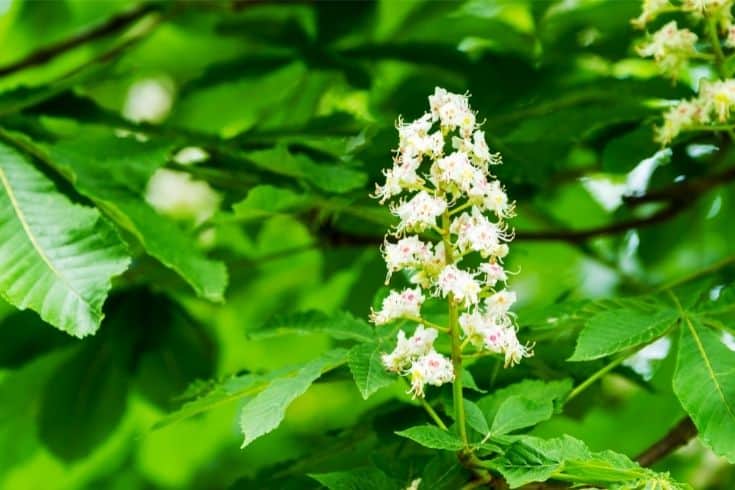
Horse chestnut wood is very hard and sturdy, but it does not belong in your aquarium.
This type of wood is toxic to fish, plants, and humans alike. The parts of the horse chestnut tree that are harmful are the nuts themselves, but also any other part of the plant if it contains sap or toxins.
If you have a problem with insects or mold growing on your pieces of wood then you shouldn’t use them in your aquarium. This is not a safe type of wood to have anywhere near your fish!
5. Lilac
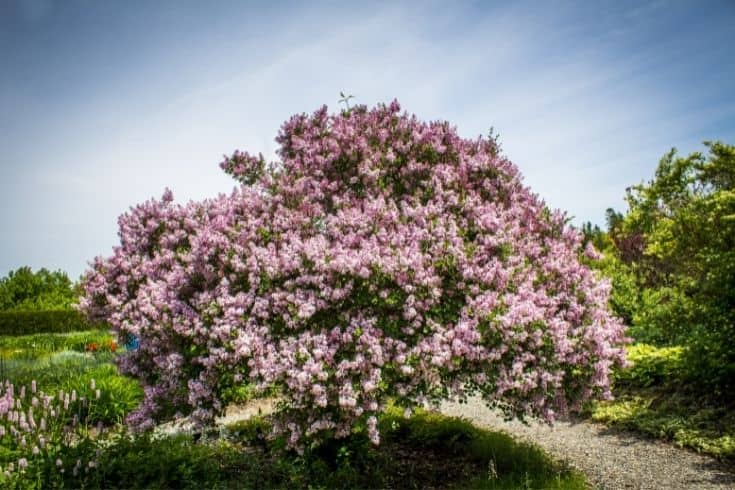
Lilac is one of the most poisonous types of wood that you can find, and it is just as toxic to aquarium fish as it is to humans.
Lilac wood will release a toxin into the water called grayanotoxin (also known as andromedotoxin) which can be harmful or lethal to your tank inhabitants. Even if you use your wood sparingly, toxins will still leech into the water and can be difficult to remove fully.
6. Ivy

Just like lilac, ivy is also toxic to fish and humans alike. In fish, this toxin is referred to as “liver poison”, and it weakens their immune system, making them vulnerable to all sorts of secondary infections.
This toxicity also makes your tank equipment dangerous for the fish in your aquarium. Equipment like heaters, pumps, filters, and thermometers can become coated with this toxin if you use ivy wood in the tank.
Even if your ivy wood doesn’t have bugs or mold on it, you should still avoid using it in a freshwater aquarium because of the health risks to yourself and your fish.
7. Pine

Pine may look great as part of your furniture, but it is not suitable for use as aquarium decor.
Pinewood releases sap, tannins, and oils into the water that can cause stress to your fish. This type of wood also releases large amounts of resin when it becomes saturated with water, so you should avoid using pine in any sort of aquarium filter because this resin will clog the filter’s flow and reduce the amount of water that the filter can handle.
The best thing to do is to keep your wood in an outdoor pond or a separate aquarium if you want to use it somewhere else in your home.
8. Spruce

Spruce originates from the Northern Hemisphere, and it is toxic to livestock. This is due to the fact that it releases sap into the water that will make your tank look murky and dirty over time because it reduces the amount of light penetration in your aquarium. Over the long term, this form of aquarium water pollution will cause stress to your fish, and it can also reduce the efficiency of your filtration.
This type of wood also releases toxins called polyphenols which cause stress in fish, making them more susceptible to illnesses. Additionally, spruce releases sap into the water that reduces your biological filter’s effectiveness, reducing the amount of nitrates and other nutrients in your tank. The acidic level can also harm plants, fish, and fish eggs.
9. Walnut

Delicious as walnuts may be, walnut wood is not suitable for anything in your home, let alone your aquarium.
Walnut wood releases a chemical called juglone (5 hydroxy-1,4-napthoquinone) which prevents algae and plants from growing properly. If you use this type of wood in your freshwater aquarium then it can cause toxic conditions where nothing will grow.
In addition, walnut wood releases a toxin called thujone which is the same poison that you find in wormwood and sage. It causes neurological problems and diseases in humans and in fish, so avoid this type of wood at all costs!
10. Yew
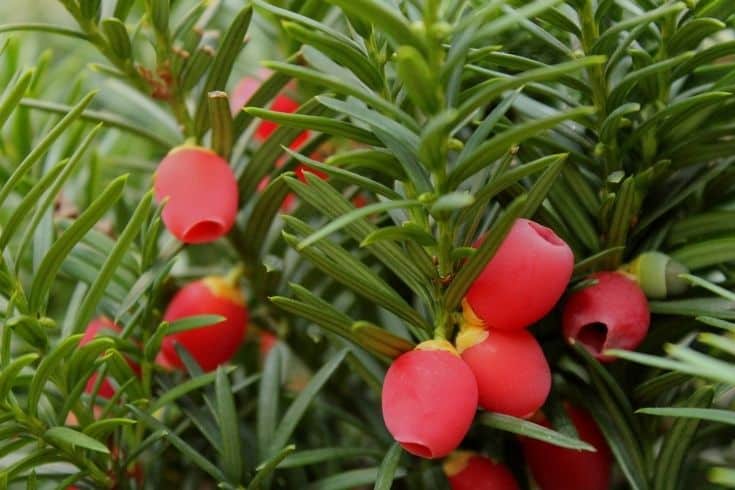
Known for its antifungal and antiparasitic properties, yew is a type of wood that is used medicinally for humans – but it can also be toxic to your fish!
This type of wood releases saps into the water which reduces the amount of oxygen in your tank. This causes stress to the fish as their gills do not absorb enough oxygen. Yew also releases toxins called taxanes that can cause harm to fish’s hearts and livers, as well as cause birth defects in fish fry.
Safe Wood For Freshwater Aquarium
Having discussed some examples of natural wood you shouldn’t use, let’s move on to types of wood you can use in your freshwater aquarium to give it a chic, natural look. Any type of wood that is safe for freshwater aquarium use can be identified by one simple rule: if you see sap when the wood is cut, then it’s inedible for fishing.
This means that bamboo, willow branches, and silk plants are generally safe to use in your tank because these types of plants do not release sap. Many types of driftwood make great choices as well. Ready to learn more? Let’s go!
Safe Driftwood
Driftwood is a style of wood that can be identified by its unique, twisted shape. Many hobbyists enjoy using a piece of driftwood as part of the decoration in their aquarium because it adds a natural feel to the tank. There are several types of driftwood that can be used safely, such as:
1. Bogwood

A beautiful piece of bogwood will make any aquarium look better. The term “bogwood” refers to wood that has been preserved in peat swamps, and it typically has a green-black color and contains many air bubbles in its structure.
True bogwood is an extremely popular choice for aquascape designs because of its striking appearance and low tannin levels. However, you should be aware that not all bogwood is created equal! Bogwood that has been harvested illegally can contain arsenic and lead fragments, which will do more harm for your aquarium water than good.
For that reason, it’s vital that you purchase bogwood from reputable retailers, instead of picking up random pieces of bogwood in aquarium shops. While it is true that any type of bogwood would look amazing as a piece of decorative wood, it is more important that you purchase wood from a merchant who guarantees the quality of their bogwood.
2. Mopani Wood
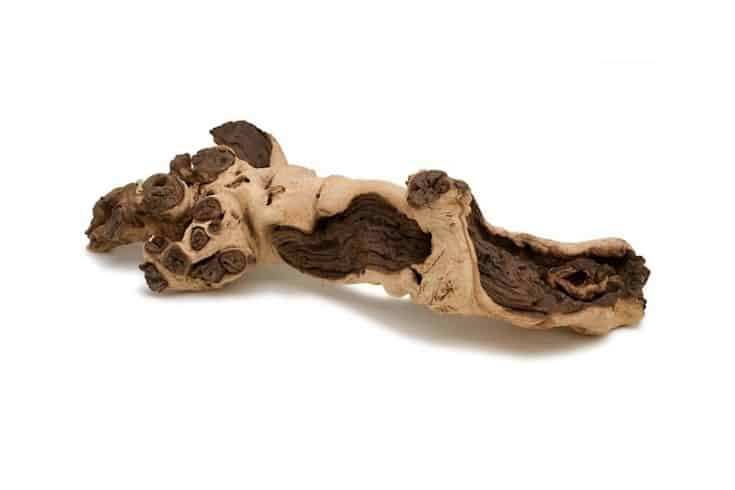
Originating from Southern Africa, this popular wood is known for its dark color. It is often used by pet owners to create feeding stations for birds or reptiles, but it can also be an excellent choice for your freshwater tanks.
Mopani comes with a very low tannin content, so this type of wood can be safely used in your fish tank. Just make sure that you rinse the wood thoroughly before introducing it into your water. Also, keep in mind that fresh wood can release a bit of tannin for the first few weeks, so it’s best to monitor your water chemistry during this time.
3. Redmoor Wood

Redmoor wood is known for its versatility and natural color. It’s often found in garden ponds, but it can also be used to create a striking centerpiece for your fish tank. Redmoor comes with very low tannin levels and minimal bark, so this type of wood is safe to use with aquatic life as long as you follow the proper steps before introducing it into your fish tanks.
Keep in mind that even this safe variety of wood may contain low levels of humic acid, but this shouldn’t be a problem for your freshwater fish. To be safe, however, make sure that you perform a water test before adding any type of driftwood to your tank.
4. Marsh Root
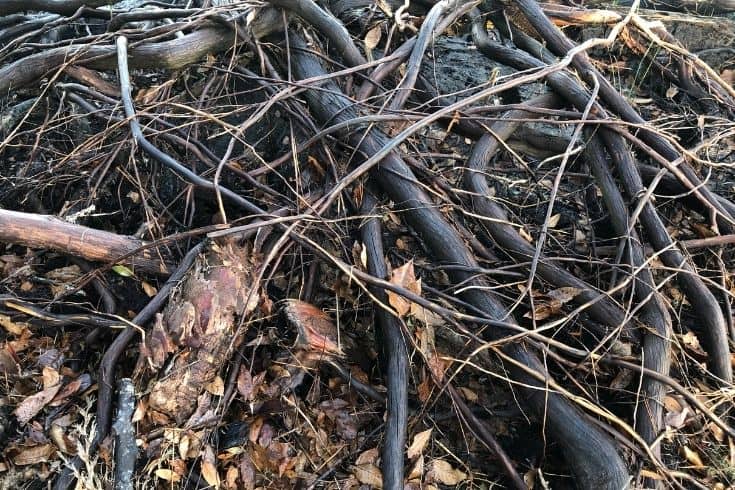
The intricate nature of marsh root makes it a popular type of driftwood for aquariums. House designers often use it to create a natural feel in modern homes, and many hobbyists are turning towards this beautiful driftwood to create dazzling effects in their tanks as well.
Unlike most of the above-mentioned driftwood types, marsh root actually comes in different colors. It is often harvested from marshes, so its color will vary depending on the substrate that was found in the water where it was grown. For example, some pieces may have a dark brown or black appearance while others may look very similar to manzanita branches. Either way, marsh root is an excellent choice for aquariums because it will help to mimic the natural habitats of your fish.
5. Sumatran Driftwood

Sumatran driftwood brings natural harmony to a tank that has an Asian-inspired design. It’s commonly used in Japanese gardens, but it can also be an excellent addition to your freshwater aquariums – particularly if you have taller tanks.
Large pieces of Sumatran driftwood can support a lot of weight, so this type of wood is often used as a natural stand for large aquariums. In fact, you can attach your airlines to it as well as hide any external filters behind the driftwood. Tropical fish also feel very safe when they can hide inside Sumatran driftwood, which makes it the ideal type of wood for aquariums that are home to territorial species.
Uncut pieces of Sumatran wood tend to be very large, so many retailers import them in smaller sizes and then cut them into a variety of sizes that can be used for aquariums. You’ll find Sumatran driftwood from time to time at pet stores, but you may have better luck online.
6. Azalea Root
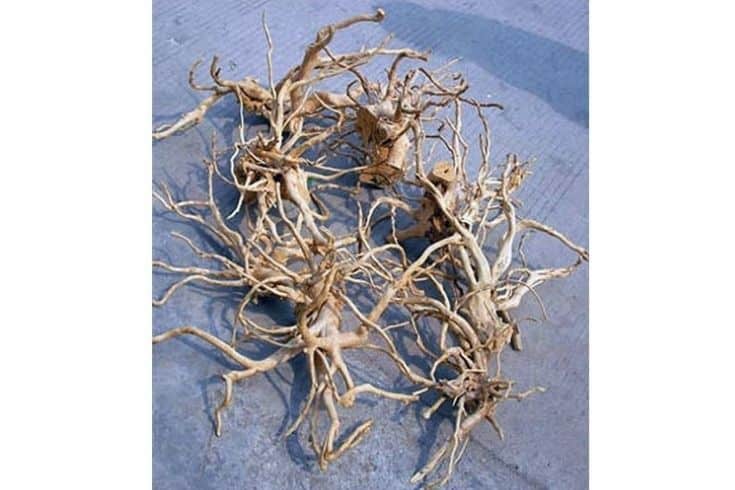
Azalea driftwood is one of the more common types of tree root driftwood. What this means is that the tree has died and the roots remain, which makes it a safe choice for freshwater aquariums. The unusual branching and intricate patterns found in its dark brown azalea roots make them a popular choice for aquariums, particularly those that attempt to replicate the natural environments of its inhabitants.
Azalea driftwood comes from the evergreen Californian azalea, which is a fairly common plant that can be found in many parts of California. In fact, the plant itself is very adaptable and puts up with most types of water conditions. This makes it a favorite for local fish stores that are looking to provide their customers with driftwood that will work in just about any freshwater aquarium.
7. Saba Wood
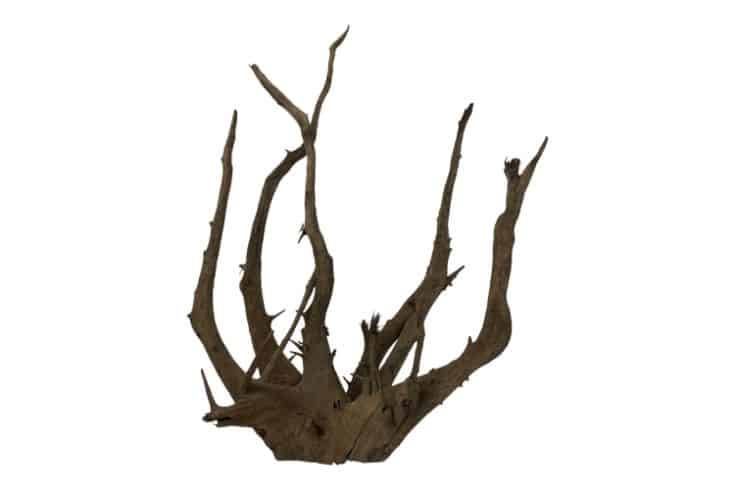
As far as fish tank driftwood is concerned, saba wood is among the most sought-after types of driftwood. It’s particularly popular with hobbyists who attempt to create a river-like effect in their tanks. To achieve this, many hobbyists choose large pieces of saba driftwood and place them on the floor of their aquariums so that they can be partially submerged.
Saba driftwood looks just like its name implies because it’s made from the wood of the saba mahogany tree. It has a very dark brown appearance that is made even darker by its broad-leafed top. This type of driftwood makes every aquarium look especially natural, so it’s no wonder why it is one of the best sellers at large online retailers.
8. Cholla Wood

The benefits of adding real driftwood to your aquarium can’t be overstated. Chola wood is a very popular choice because it looks natural and provides hiding places for fish. These pieces of driftwood need to be soaked in well-oxygenated water to keep it from deteriorating or leeching potentially harmful chemicals into the water.
Cholla driftwood comes from cholla cactus trees, which are large desert cacti that produce a very dense type of wood. It is particularly popular with fish hobbyists because it looks just like the bark found on most types of driftwood, but it is made from a cactus tree’s unusual trunk. The result is a very natural-looking aquarium tree root that makes any tank look much more realistic.
9. Jangle Wood
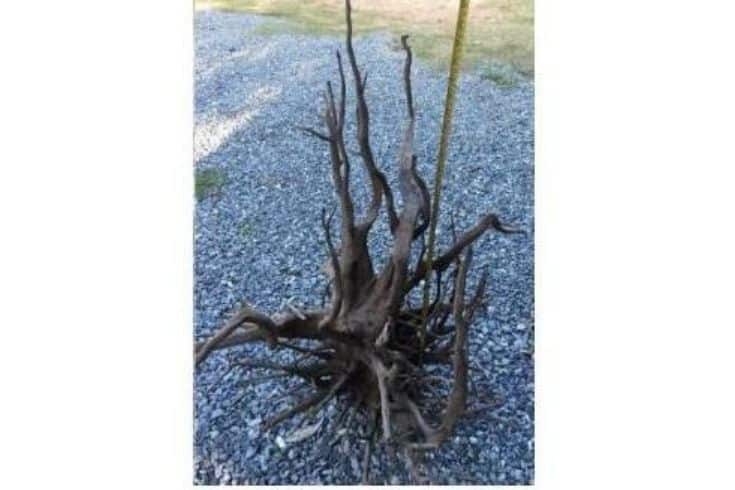
Professional driftwood curers are taking advantage of the rising demand for different varieties of driftwood by scouring the earth’s waterways for unique types of wood that can be used to create interesting pieces of fish tank decor.
Jangle driftwood is a particularly unique type of tree root driftwood because it has a tight, interwoven pattern with rich brown hues that make it look very appealing to the eye. It’s a favorite amongst fish hobbyists that prefer a more natural look, as it mimics the appearance of most types of driftwood that are sold at local pet stores.
10. Manzanita
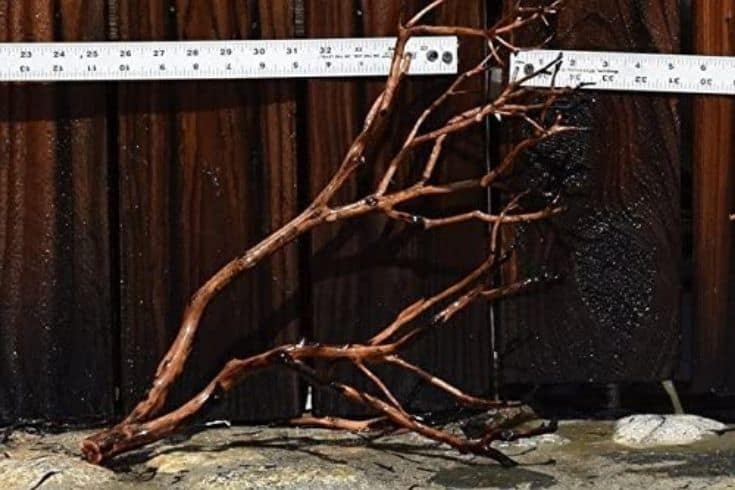
It’s best to soak manzanita in hot water before using it because it can take several weeks to fully leech out the tannic acid that naturally occurs in this type of driftwood. However, once you do so, you can safely use manzanita in fish tank water without having to worry about it leeching any potentially harmful chemicals.
Manzanita is one of the most popular types of driftwood because it is more tightly woven and has a lighter appearance than many other types of intricate driftwood. Hobbyists use manzanita branches in their tanks to create natural-looking tangles that provide great hiding places for fish and create a very realistic effect.
11. Tiger Wood
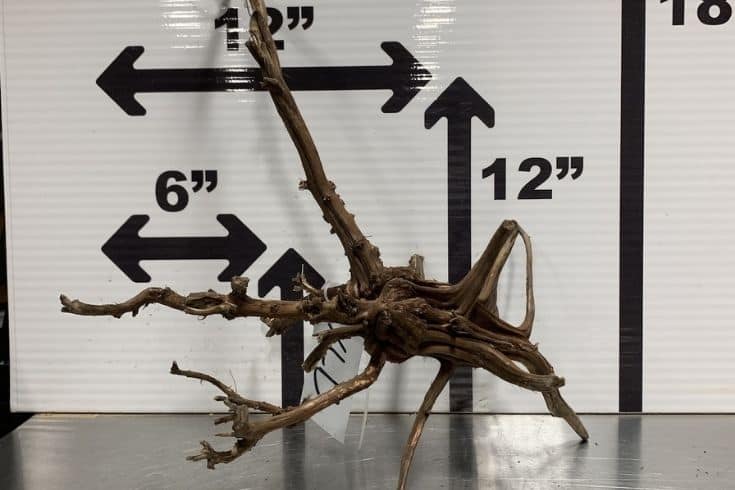
No, not the golfer. Tigerwood is a natural species of driftwood that looks like it was made for the tanks of fish hobbyists. It’s highly prized because its light brown color and wavy, interwoven appearance make it look very similar to manzanita driftwood, but with more of an aquatic feel.
Tigerwood is one of the most common types of driftwood on the market because it is relatively easy for tree farmers to grow and harvest. However, its popularity among fish hobbyists has made tigerwood one of the more expensive types of driftwood available for purchase online.
12. Malaysian Driftwood
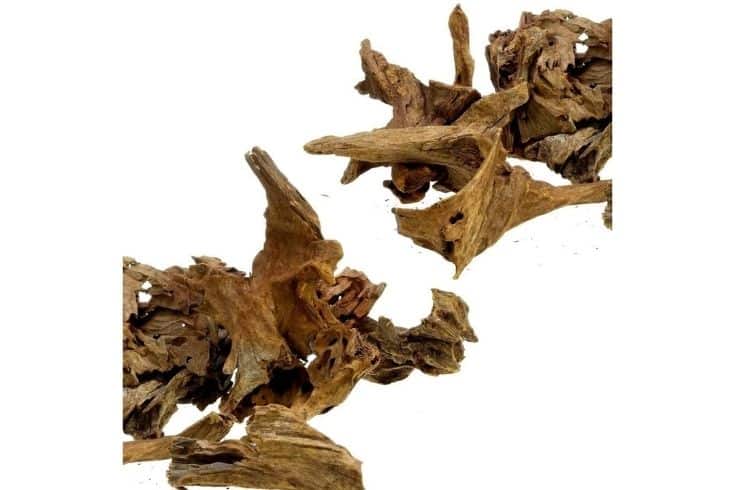
A single piece of Malaysian wood is often enough to give larger aquariums a very natural look. Aquarium fish enjoy swimming through and hiding in the crevices of this branchy driftwood because they feel like they’re back in their natural habitat, and many species of aquatic life can even use it as a place to spawn their eggs.
Despite the fact that the Malaysian driftwood branch looks like something you’d use to roast a marshmallow, it is actually one of the safest types of driftwood available. It doesn’t contain any harmful chemicals or tannins, which means it won’t leach acids over time or cause your water to turn a brown tea color.
13. Pacific Wood

Aquarium aquascapes require a touch of nature, and Pacific wood is perfect for the job. This species of driftwood is a popular choice for aquarists who like to keep live plants in their aquariums because it is often used to support them.
Pacific wood is essentially harvested from redwood trees, which means it’s one of the most durable types of driftwood available on the market. You’ll have ample time to enjoy its rustic appearance before it starts to decompose, unlike some other types of driftwood that can rot in as little as two weeks.
14. Spider Wood
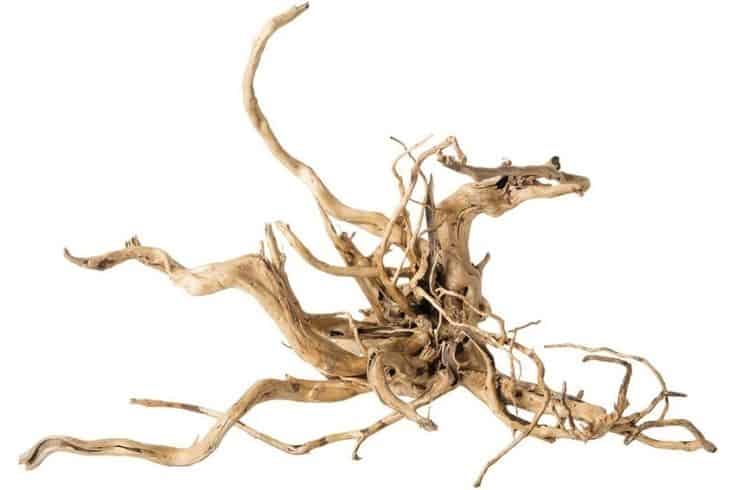
Named after the wavy appearance of its branches, spider wood makes an immediate statement in any tank. This type of driftwood is among the most popular choices for aquarium hobbyists who like to create free-floating landscapes that look like miniature forests, so it looks especially fitting when you attach it to bamboo.
15. Bonsai Trees
We hear you – it sounds totally crazy to plant live trees in your freshwater fish tank. However, that’s exactly what professional aquascapers do when they create “bonsai trees” by planting them in driftwood.
It is one of the most difficult types of aquarium decorations to make because it requires a bonsai tree, but for some people, its resulting beauty and charm is well worth the effort!
Safe Wood
16. Alder Wood

Adding a piece of solid wood to your aquarium, such as Alder wood, can give your fish a place to rest or hide in, especially when they are hiding amongst the roots.
Red Alder wood is very popular because it looks so natural in an aquatic environment. It can be used for driftwood decorations, bamboo poles, and even aquarium stands, which means you’ll get several uses out of this type of wood before you have to replace it.
17. Apple

Wood from different types of fruit trees, including apple trees, makes for excellent aquarium decorations because they come with the added benefit of releasing small amounts of nutrients into your tank’s water.
An apple tree branch in an aquarium provides a natural and rustic touch that will really give your home aquascape some character!
18. Beech

As far as wood in aquariums goes, beechwood is very cool. It has a slightly darker appearance than oak and depending on where it’s from, its color can range from olive to black.
The main allure of beech wood lies in its natural appearance: it has a characteristic light tan color and wavy grain, and it looks like something you’d see in an aquarium right away.
19. Birch
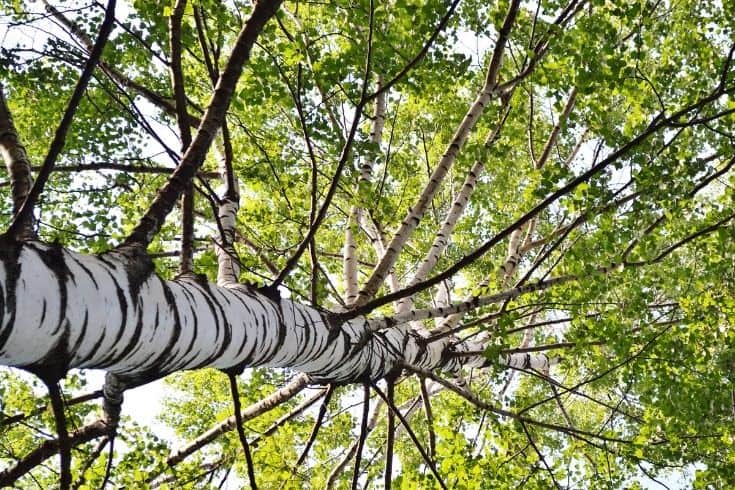
Decorating your aquarium with wood from a birch tree does more than add natural beauty to your home; it can also help purify the water. Birchwood is filled with tannins that stimulate slime coat development in fish and aid in keeping aquarium water crystal clear.
Birch trees grow quickly, which means their wood isn’t as strong as some other types of driftwood. However, because it’s so soft, it is easy to carve into shapes that will look good in your aquarium.
20. Cherry
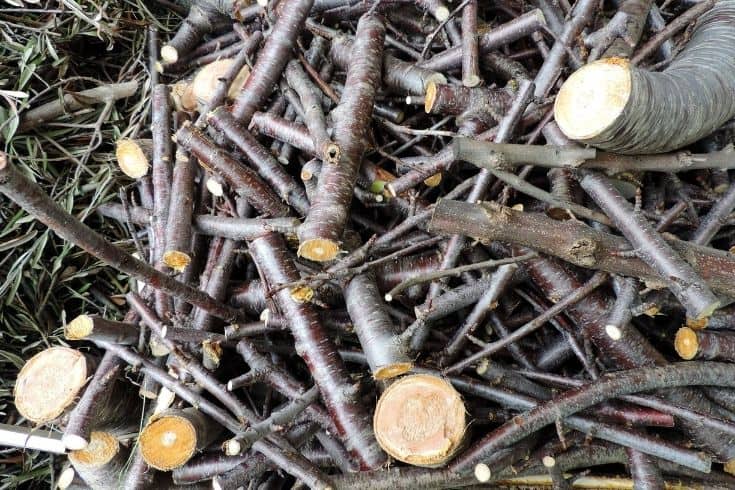
As far as aquarium wood goes, cherry wood is one of the most elegant types available because it’s strong enough to last for a long time, but it’s also beautiful and easy to work with.
Cherry wood has a nice color that provides an excellent contrast with the green of your aquarium plants. This is an instance where a little bit of wood goes a long way, so consider using it for accents or creating hidden planting areas rather than the large-scale decor.
21. Hawthorn
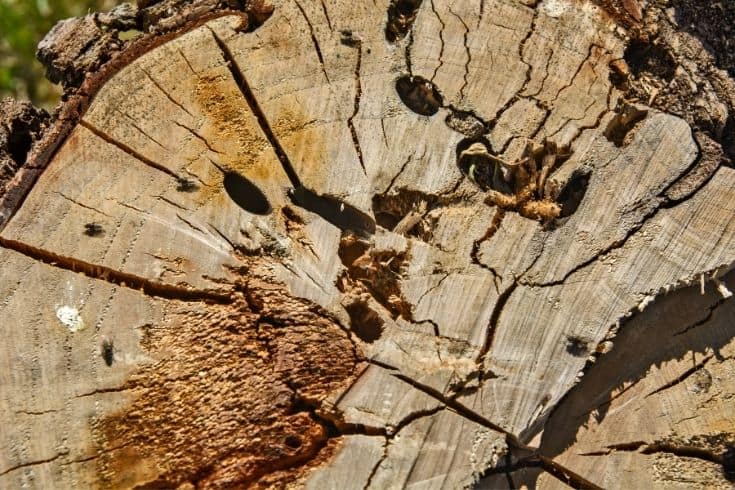
Hawthorn originates from Europe, where it is popular for its decorative branches and leaves – which makes it perfect for aquariums!
Although hawthorn wood has a soft texture, the water in your tank will help to strengthen it over time. It is sometimes lighter than oak, but if you choose the right branch, then that shouldn’t be much of an issue.
22. Heather

When it comes to aquarium wood, heather is a very colorful choice! It’s purple in color, but depending on where it’s from, its hue can range from light lavender to dark grape.
As far as freshwater aquarium plant decor goes, heather is a stunning accent that will add rich color and charm to your tank. It has a nice appearance and it doesn’t add too much weight to your tank, which makes it easy to work with when you’re arranging your substrate and other decorations.
23. Oak
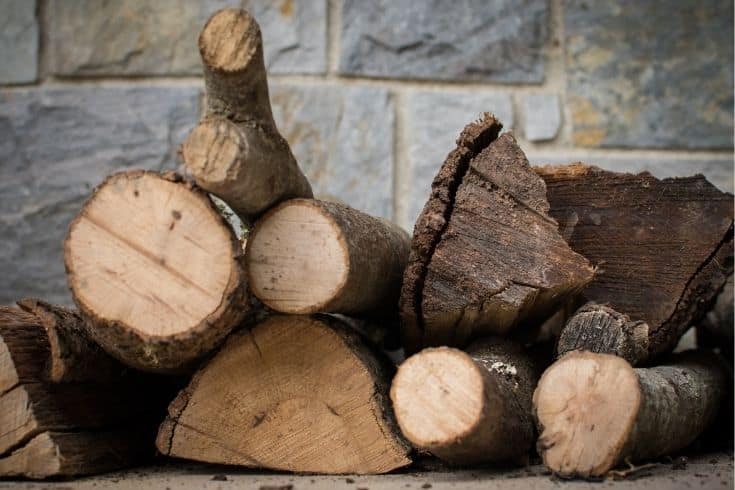
This type of aquarium wood has a classic appearance that is sure to look great in your tank! It comes in a wide range of colors, from light tan to dark black.
Oak makes an excellent choice for aquarium decor because it has a long lifespan and it grows faster than many other types of wood. In fact, some varieties are better suited as aquarium plants because their branches are thinner than average.
24. Pear

Although pear wood is beautiful, it’s not always the best choice for your aquarium. It can rot quickly once it’s submerged in water, and it isn’t as strong as other types of wood.
However, if you choose carefully and you find a piece that has been dried out thoroughly (it should be very light), then pearwood can be a great choice for your aquarium.
25. Sycamore

Sycamore wood is commonly used to make furniture, but it also makes for great aquarium decor. It’s strong and durable, which means it’s perfect for creating large-scale decorations like the centerpiece of your tank.
The natural color of sycamore wood will vary depending on where it comes from; some types are light in color while others are dark brown. This makes it an excellent choice for adding contrast to your tank because you can choose a piece based on how many colors you want to add.
The Takeaway
Wood makes an attractive, natural addition to your aquarium, but it is important to know which types of wood are safest for your plants and fish before you make a purchase. We hope this guide has been helpful, but if you want to learn more about natural decor you can add to your tanks, feel free to check out this article!
If you have any comments, questions, or other thoughts you’d like to share, don’t hesitate to leave a comment below! And if you found this article helpful, please share it with your friends! As always, good luck and happy fishkeeping!
